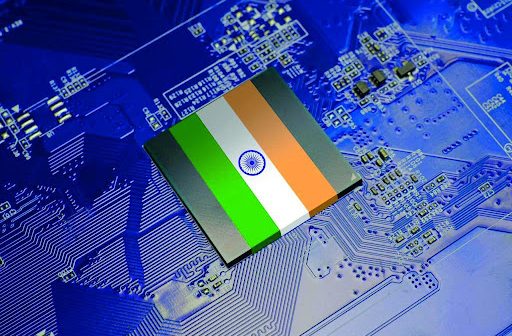The global chip shortage, a lingering consequence of the pandemic and geopolitical tensions, has exposed the vulnerability of a supply chain heavily reliant on Taiwan. As the world’s leading manufacturer of advanced semiconductors, any disruption in Taiwan could have catastrophic consequences for electronics production worldwide. This begs the question: can India emerge as the alternative, stepping in to fill this critical gap?
The Global Chip Shortage: A Looming Crisis
The global chip shortage, first felt in 2020, continues to disrupt production of electronics ranging from smartphones and laptops to automobiles and medical equipment. The reasons are multifold: surging demand for consumer electronics during lockdowns, limited production capacity due to COVID-19 restrictions, and a complex, geographically concentrated supply chain.
Taiwan sits at the heart of this chain. It accounts for over 90% of the world’s most advanced chip production capacity, a dominance achieved through decades of focused investment and technological expertise. This heavy reliance on a single source creates a precarious situation. A natural disaster, geopolitical conflict, or even a major manufacturing disruption in Taiwan could cripple the global supply of chips.
Market Size and Growth Potential: A Lucrative Opportunity
The global semiconductor market is a mammoth, with a projected value exceeding $590 billion by 2024. This figure is expected to grow exponentially in the coming years, fueled by advancements in artificial intelligence, 5G technology, and the Internet of Things (IoT). The chip shortage has only served to highlight the immense potential of this market, with countries vying for a larger share.
India’s Strengths: A Stepping Stone to Chip Supremacy
While India currently holds a minuscule share of the global chip market (around 3-4% as of 2023), it possesses several strengths that position it as a potential alternative to Taiwan:
- Demographic Dividend: India boasts a young and educated population, a valuable resource for the chip industry which requires a skilled workforce in areas like engineering, physics, and computer science.
- Government Initiatives: Recognizing the strategic importance of chip manufacturing, the Indian government has launched several initiatives to attract investment and incentivize domestic production. The “Make in India” program and the Production Linked Incentive (PLI) scheme for semiconductors are prime examples. These initiatives offer significant financial and infrastructural support to companies setting up chip fabs in India.
- Emerging Ecosystem: The Indian chip design industry is flourishing, with several fabless chip design companies achieving international recognition. This design expertise can act as a springboard for a more comprehensive domestic chip manufacturing ecosystem.
- Strong IT Infrastructure: India’s well-established IT industry provides a strong foundation for chip manufacturing. Existing expertise in areas like electronics manufacturing and software development can be leveraged for chip production.
Challenges and Hurdles: Roadblocks on the Path to Chip Leadership
Despite its strengths, India faces several challenges in its quest to become a major chip manufacturer:
- Lack of Mature Ecosystem: Building a robust chip manufacturing ecosystem requires a complex interplay of factors, including foundries, chip designers, fabrication equipment suppliers, and raw material providers. India currently lacks a mature ecosystem, making it reliant on foreign players for crucial components and expertise.
- Technological Gap: Fabrication of advanced chips requires cutting-edge technology and highly skilled personnel. Bridging the technological gap with Taiwan and other established players will require significant investments in research and development, as well as talent acquisition and training.
- High Capital Costs: Setting up chip fabs is an immensely expensive undertaking. The cost of constructing a single advanced fab can run into the tens of billions of dollars. India will need to attract substantial private and public investment to achieve its chip manufacturing ambitions.
Strategies for Success: A Roadmap to Chip Supremacy
For India to emerge as a major chip manufacturer, a multi-pronged approach is necessary:
- Focus on Talent Development: Investing in STEM education and creating specialized training programs for chip design and fabrication is crucial. Collaboration with established chipmakers to facilitate knowledge transfer can accelerate skill development.
- Building a Strong Ecosystem: Attracting foreign investment through attractive incentives and fostering collaboration between domestic and international players is essential. This will help establish a complete chip manufacturing ecosystem within India.
- Focus on Specific Segments: Initially, India can focus on manufacturing less advanced chips that have a high demand but are not currently in short supply. This can help establish expertise and build a strong foundation for venturing into more advanced chip production in the future.
- Strategic Partnerships: Collaboration with countries like the US, Japan, and South Korea, which are also aiming to diversify their chip manufacturing bases, can be mutually beneficial. This could involve joint ventures, technology transfer agreements, and coordinated investment in research and development.
Conclusion: A Long Game with High Stakes
India’s ascent as a major chip manufacturer is a long game with high stakes…but the potential rewards are equally immense. By addressing the existing challenges and implementing the outlined strategies, India can carve a niche for itself in the global chip market. This will not only mitigate the risks associated with overdependence on a single source but also propel India’s technological prowess and establish it as a key player in the age of digital transformation. The journey won’t be easy, but with a clear vision, unwavering commitment, and strategic partnerships, India has the potential to become a chip savior, not just for the world, but for its own economic and technological ambitions.





